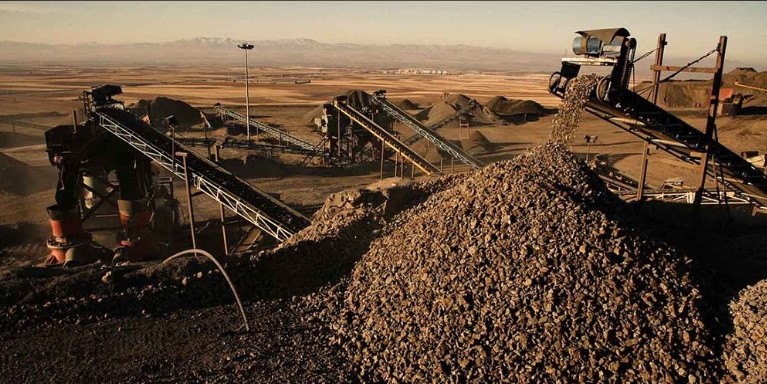
The international metallic industry serves as a cornerstone of modern civilization, intricately linked to numerous sectors inclusive of production, technology, and production. This enterprise’s journey, transitioning from the uncooked extraction of ore to the subtle manufacturing of metal, encapsulates a complicated manner motivated by various factors.
These factors, starting from extraction strategies and processing technologies to marketplace dynamics and regulatory environments, play important roles in figuring out the very last market price of metals. The complex interaction between supply and demand, technological advancements, and international trade further shapes the economic landscape of the metal price index.
Understanding the multifaceted adventure from ore to metal is not only vital for enterprise stakeholders but also policymakers and consumers, imparting insights into the pricing mechanisms and market fluctuations. As such, this narrative delves into the vital stages and influencing elements of steel manufacturing, losing light on the demanding situations and possibilities in the worldwide metallic marketplace.
The Role of Ore Extraction
At the very beginning of this journey lies the extraction of ore, a system that units the level for metal manufacturing. Ores, evidently happening minerals or rocks from which metals may be extracted, are the uncooked materials of the metal industry. These ores are dispersed throughout the globe, with unique kinds found especially in regions, various in abundance, quality, and accessibility. For instance, bauxite ore, the primary supply of aluminum, is predominantly located in the tropical and subtropical areas of Australia, Brazil, and Guinea.
Extraction techniques, which include open-pit mining, underground mining, and in-situ leach mining, notably have an impact on the cost of the very last product. Open-pit mining, frequently used for minerals near the floor, is much less costly in comparison to underground mining, which is required for deeper ore deposits. Consequently, the selection of extraction method no longer affects the environmental footprint but also the market rate of metals, because the more complex and hard work-intensive methods increase production fees.
Processing and Refining Ore
Following extraction, the ore undergoes a chain of processing and refining steps, remodeling it right into a usable metal. This phase is essential because it determines the purity and satisfaction of the very last product. The refining technique regularly entails crushing and grinding the ore, accompanied by separation strategies which include flotation or magnetic separation, to pay attention to the metal content. Subsequent steps may encompass smelting and electrolysis, similarly purifying the metallic to acquire the desired specs.
The method of processing and refining can significantly impact the value. For example, the strength-in-depth nature of smelting for aluminum manufacturing contributes appreciably to its price. Additionally, the requirement for excessive purity in certain applications, like electronics, necessitates superior and therefore dearer refining processes. Thus, the intricacies of processing are not only from the physical characteristics of the metal but also its market value, making this stage a crucial determinant in the Iron ore price index pricing equation.
Transportation and Logistics
Moreover, the adventure from ore to steel contains a critical issue that often is omitted: transportation and logistics. The movement of raw ore from mines to processing vegetation, and from there to manufacturers around the arena, is a logistical assignment that has a profound impact on costs. The cost of transportation, inspired by distance, gasoline prices, and the supply of transport strategies, can extensively add to the general fee of steel. For instance, the cost of delivering iron ore from Brazil to China can vary, affecting the worldwide charge of metallic.
Furthermore, logistical efficiency, or the dearth thereof, can cause delays and bottlenecks, affecting the supply chain and, therefore, charges. For instance, disruption within the delivery industry or a shortage of freight alternatives can cause transport delays, impacting producers and ultimately clients. Thus, the logistics of transporting ore and steel are not just about shifting substances from point A to factor B but are a pivotal component inside the economic equation of metallic production.
Market Demand and Supply Dynamics
Central to the pricing of metals is the dynamic interaction between demand and supply. The worldwide demand for metals, driven by way of industries which include construction, cars, and electronics, fluctuates primarily based on monetary growth, technological advancements, and societal tendencies. For example, the upward thrust of electrical vehicles has spurred elevated demand for lithium, cobalt, and nickel, essential for battery manufacturing.
On the delivery aspect, elements including ore availability, mining potential, and geopolitical balance can create constraints, influencing prices. A strike in a primary mining operation or a new tariff on metal imports can tighten supply, pushing prices upward. Conversely, the discovery of a brand new ore deposit or the improvement of extra-efficient extraction generation can increase supply, potentially lowering prices.
Thus, the equilibrium of marketplace demand and delivery is a continuously shifting panorama, with any change in both facets able to inflict good-sized price fluctuations. This delicate balance highlights the significance of tracking global developments and marketplace alerts to assume changes in metal charges.
Technological Advances and Efficiency
Finally, technological improvements play a decisive function in shaping the adventure from ore to metallic, influencing both cost and environmental impact. Innovations in mining technology, such as automated drilling and ore sorting, have extended efficiency and decreased expenses. Similarly, advances in refining methods, consisting of the development of extra sustainable and much less electricity-extensive techniques, are pivotal in decreasing the environmental footprint and fee of metal production.
Moreover, the adoption of virtual technology and records analytics in logistics and supply chain management has better the efficiency of transportation, lowering delays and optimizing expenses. These technological strides not only make contributions to greater environmentally pleasant practices but also to the stabilization of metallic fees via enhancing operational efficiencies and decreasing production charges. The journey from ore to metal, for that reason, isn’t always just a testament to human ingenuity in extracting and processing natural sources but also a mirrored image of our chronic try toward innovation and sustainability.
The Impact of International Trade
International exchange exerts a profound impact on steel charges, making the steel market simply global. The intricate net of change agreements, price lists, and geopolitical tensions can notably affect the provision and value of metals. Countries with rich metallic reserves often export to those with excessive calls for however confined domestic assets, growing a complicated interdependence that shapes international trade dynamics.
For example, China, as a chief purchaser of metals for its production quarter, performs a giant position within the demand for metals globally. Any shift in its economic policies or business demand can have ripple effects throughout worldwide markets. Similarly, the most important metallic-producing nations including Australia, Brazil, and Russia can affect international delivery and, therefore, prices via their export techniques and capacities.
In conclusion, the adventure from ore to metal is a multifaceted system, motivated using geological, technological, economic, and regulatory factors. Each level of this journey, from extraction and processing to transportation and international exchange, performs an essential position in figuring out the fee and availability of metals. As we continue to navigate the complexities of the worldwide metallic marketplace, the know-how of these elements turns into critical for looking ahead to tendencies, making informed decisions, and fostering a greater sustainable and green future for the steel industry.
Also Check: Cracking the Code: Decoding China’s Steel Market Price Dynamics




